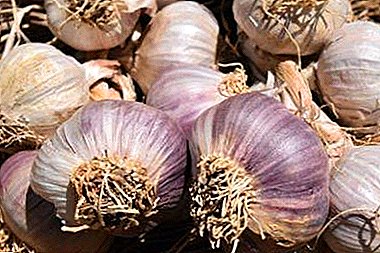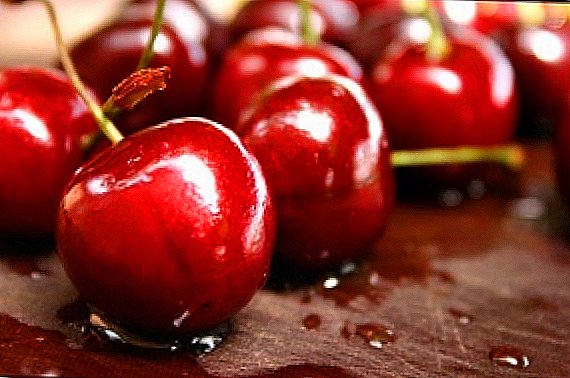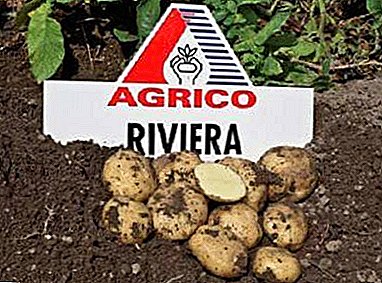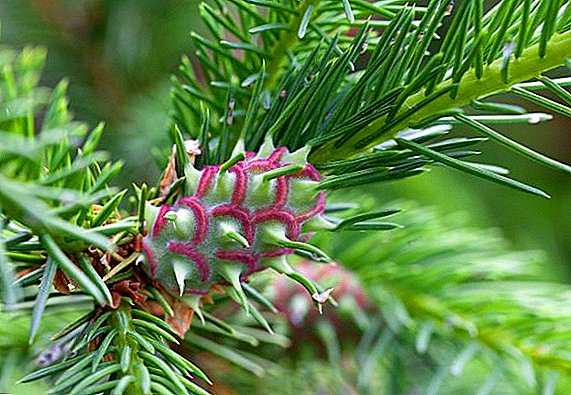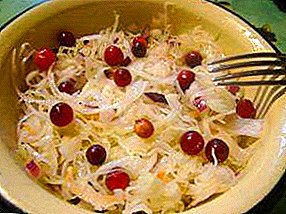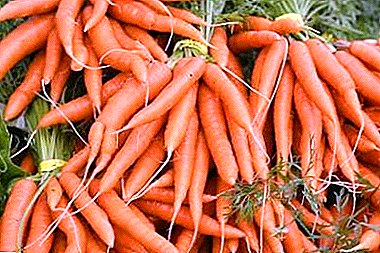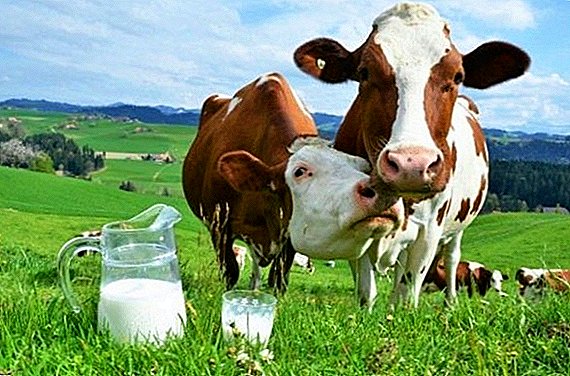 Sometimes during milking they notice that cows have milk with blood. This phenomenon often appears after calving and causes anxiety among farmers, as it is a signal of problems with the mammary gland. Consider whether you can drink milk with blood, what problems can cause the appearance of blood in it and how to help the animal.
Sometimes during milking they notice that cows have milk with blood. This phenomenon often appears after calving and causes anxiety among farmers, as it is a signal of problems with the mammary gland. Consider whether you can drink milk with blood, what problems can cause the appearance of blood in it and how to help the animal.
Can I drink milk with blood?
This milk can not drink both people and calves. It contains pathogens, and its chemical composition is changing for the worse. It decreases the content of casein, calcium, lactose and increases the proportion of chlorides and globulin.
Of course, boiling kills pathogenic microbes, but it will not improve its quality. Milk sick cows do not use, as well as cows undergoing treatment, as it also contains antibiotics.
During this period, it is necessary to milk the cow well so that all the blood clots come out. Otherwise, they may stick to the mucous membrane and interfere with the output of milk. Be sure to contact the veterinarian and conduct an examination and treatment of the animal.
Did you know? Men from the Ethiopian Bodi tribe drink milk with the blood of cows in order to become fat by the New Year. This holiday is celebrated at them in June, and the winner gets the honor and recognition of the tribe members for the whole year. Cows here are considered to be nurses, they are not killed, but only incised a vein, decanting the blood and covering up with clay.
Why do cows have blood in their milk?
The causes of cows in milk may be different. Consider the most common ones. 
Mastitis
Most often appears in a cow after calving and is accompanied by the following symptoms:
- udder swelling, the appearance of seals and clots on them;
- inflammatory processes in the swollen parts of the udder;
- watery milk mixed with blood;
- decreased appetite;
- lethargy, weak activity;
- sore nipples;
- reduced milk production.
Learn more about what diseases can hurt cows and how to treat them.
The following causes can cause mastitis:
- lack of hygiene of maintenance and care;
- calving conditions violation;
- improper distribution after childbirth;
- unbalanced feed;
- damage to the nipples and udder.
 In the presence of mastitis in cows, the following measures are taken:
In the presence of mastitis in cows, the following measures are taken:- the cow is not allowed to pasture; it is isolated and not allowed to have a calf;
- in the stall they change the litter and do daily cleaning. There should be no drafts in the room;
- normalize feeding, reduce fluid intake;
- every 2-3 hours massage the udder with camphor or ichthyol ointment and milk the cow well with your hands;
- After taking the nipples, antibiotics are injected (a mixture of penicillin and streptomycin each of 50,000 units). This is a painful procedure, and to facilitate it, add 150 ml of 0.25% novocaine to the mixture;
- for the outflow of blood of an animal, Glauber’s salt diluted in water (400 grams of salt per 8 liters of water) is watered. Such a solution is given for half an hour before milking;
- for the period of treatment, the udder is washed and wrapped with a woolen cloth. Instead of washing, you can wipe with honey alcohol-containing solution (1 teaspoon of honey per 100 grams of vodka).
Read more about how to treat mastitis in a cow.
The presence of blood in milk indicates a severe degree of mastitis, in this case, the treatment regimen may be as follows:
- with weakened cardiac activity - subcutaneous injections of caffeine (20%);
- intravenously inject 200 ml of 40% glucose solution;
- intravenous injection of 200 ml of 10% calcium chloride;
- antibiotics - intramuscular injections of penicillin 800,000 units every 4-5 hours for 3 days.
Important! The most common cause of mastitis in cows is improper milking after calving. The calf is still weak and cannot massage the udder. The colostrum is thick and tight, so the milkmaid should massage and lubricate her nipples before milking. When machine milking should finish the cow to the end.
Udder Damage
The cause of blood in the milk can be damage to the udder - bruises and cracks. This is indicated by the presence of blood only at the beginning of milking and the swollen, damaged quarter of the udder. All blood clots should be taken and measures should be taken to stop the blood.
They change the litter and keep the animal alone. Ice is put on a freshly discovered contusion on the first day, and then a day later a compress is made from ichthyol and vodka. In case of heavy bleeding, it is better to use medications, for example, inject a 10% solution of calcium chloride intravenously.
For small bleeding, you can use folk remedies. To prepare one of these drugs, take 100 grams of nettle leaves, yarrow and a shepherd's bag, pour 2 liters of boiled water and cook for 2 minutes on a quiet fire. Split the decoction into several parts and give a drink during the day. To carry out such treatment a week.  If the injury is usually caused by pasture damage, then cracks in the udder are caused by poor care. Due to this, the skin becomes inelastic and cracks appear.
If the injury is usually caused by pasture damage, then cracks in the udder are caused by poor care. Due to this, the skin becomes inelastic and cracks appear.
When they are detected, after milking, the nipples should be treated with 2% soda solution and smeared with ichthyol ointment. In the presence of strong pain before handing in the milk, the nipples are smeared with ointments that include novocaine.
It will be helpful for you to read about what to do if a cow has a udder swelling, and also find out why a cow has white discharge.
Vascular Disorders
One of the frequent causes of the appearance of blood in the milk of a cow can be vascular disorders. So, in the event of a rupture of the vessel, the milk becomes a dark pinkish color, but as a rule, within a few days everything passes.
Experts recommend that in case of such a phenomenon, the following medical devices should be used to eliminate vascular disorders:
- vitamin C, K;
- drugs that stop the blood;
- calcium.
 When blood is found in milk, it is necessary to conduct a veterinary inspection to exclude any serious, including severe vascular diseases.
When blood is found in milk, it is necessary to conduct a veterinary inspection to exclude any serious, including severe vascular diseases.Did you know? To soften the skin of the papillae, you can prepare the ointment yourself. To prepare, take a glass of heated sunflower oil, add about 3 tablespoons of paraffin and keep this mixture in a water bath until complete dissolution and obtaining a homogeneous mass.
Preventive measures
To prevent the appearance of blood in the milk of a cow, the following preventive measures are recommended:
- carry out hygiene measures. Be sure to rinse the udder with warm water before and after the milking process, and then wipe dry with a towel;
- massage and give a good cow after calving;
- to eliminate the appearance of cracks, you need after washing the udder to treat the nipples with petroleum jelly;
- to prevent the appearance of mastitis, the room for keeping cows should be warm enough, well ventilated, but without drafts;
- monitor the quality of the feed, which should contain all the necessary elements for the animal. It has a positive effect on the immune system;
- on time to clean and change the litter in the stall;
- be attentive to the animal and timely conduct a veterinary inspection.
 If blood appears in the cow’s milk, the animal should be shown to the veterinarian and measures should be taken to eliminate the causes. Such milk should be well handed over and should not be consumed by people and animals.
If blood appears in the cow’s milk, the animal should be shown to the veterinarian and measures should be taken to eliminate the causes. Such milk should be well handed over and should not be consumed by people and animals.
Important! If blood is found in the milk in connection with the formation of warts on the nipples, then these formations are removed only by surgery with the involvement of the appropriate specialist. The reason is improper care and dirt in the cracks that appear.With mastitis, it contains pathogenic microbes and has a modified composition that impairs its nutritional value. To prevent such a situation, preventive measures should be taken.
Reviews from the network
For small amounts of blood in the milk or for mechanical damage to the udder, the following methods are effective: Vitamin C preparations; calcium and vitamin K; adrenaline solution (local); hemostatic agents (hemarctin). Consultation of a vetrinar will not be very redundant. When blockage of the nipple canal with blood clots produces a massage.



